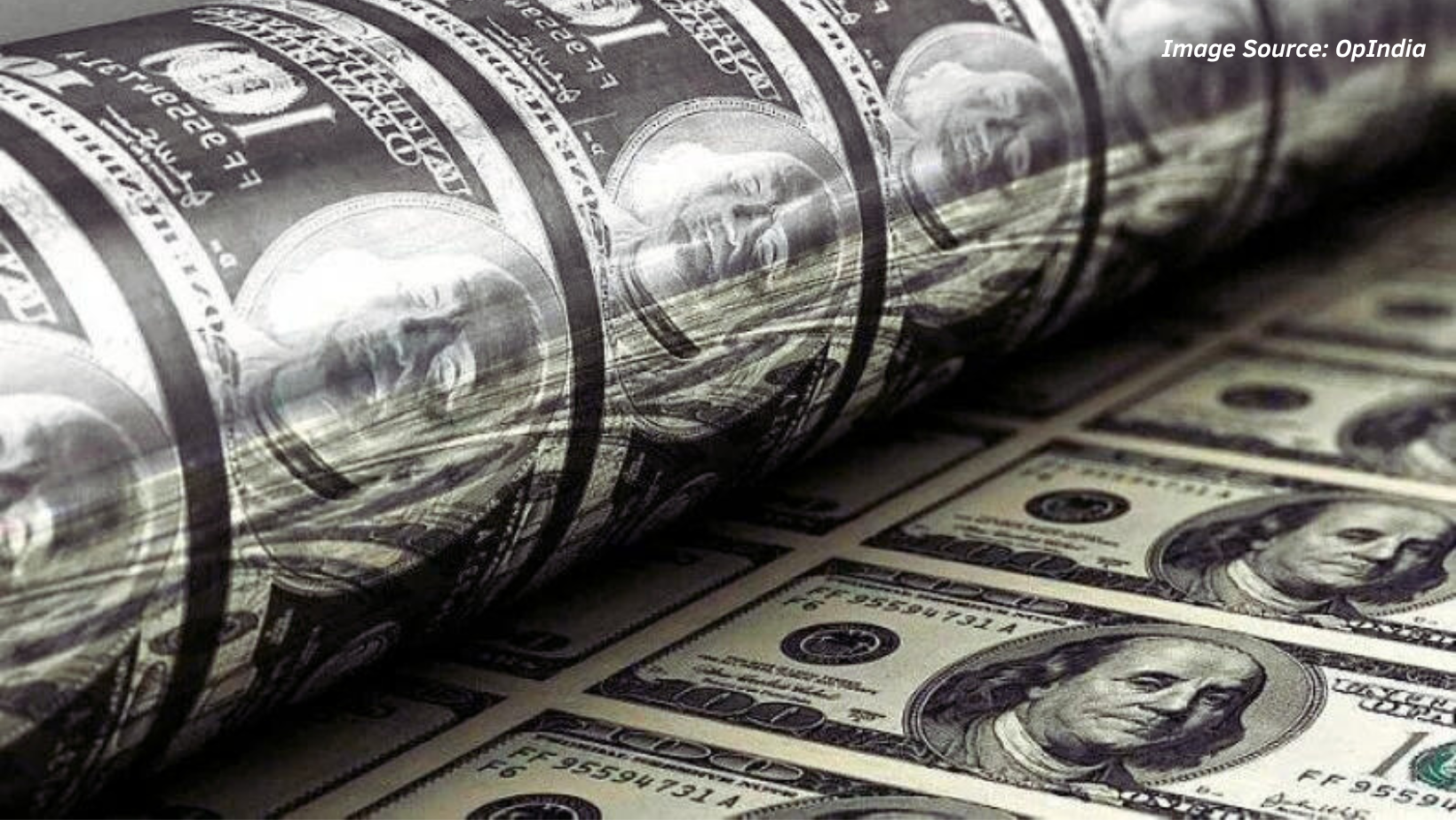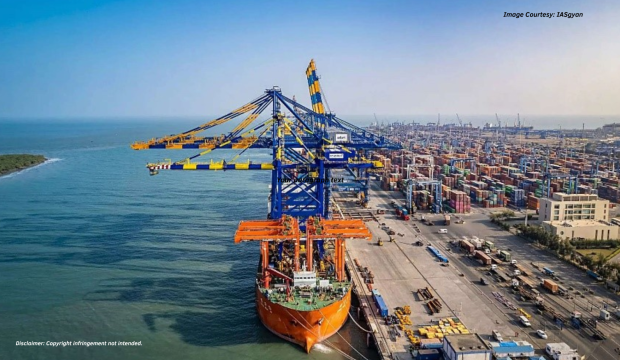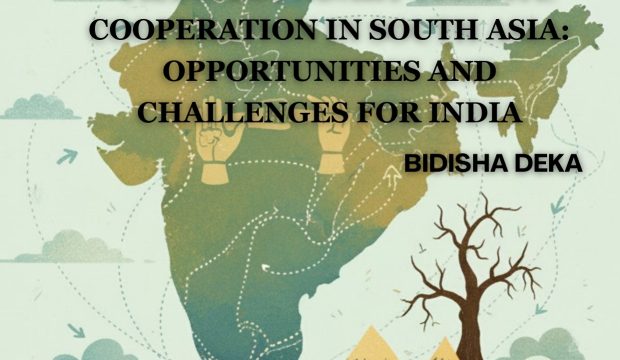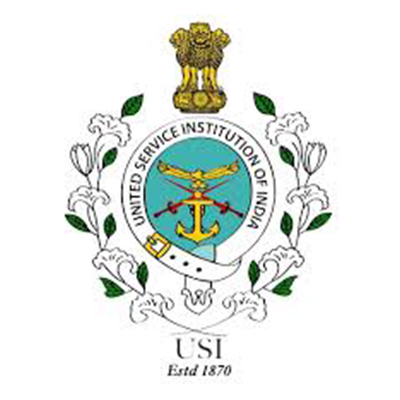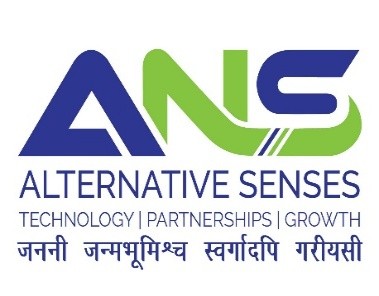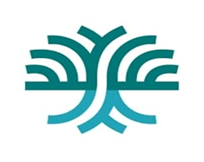Introduction
International trade has always played a crucial role in enhancing the economic stability of any nation. Nations are better off when they buy and sell from one another.[1] Any trade, since ancient times, has always involved ‘exchange’. Those exchanges were either materialistic or currency notes, depending upon which era we are talking about. From bartering goods to promote trade to metallic coins (gold, silver, etc) to the inception of currency notes, trade came a long way.[2] The smooth functioning of international trade required the establishment of a universally acceptable currency that could help in settling internal as well as external trade.[3] Different systems were tried in order to compare the value of two currencies until the Bretton Woods System,[4] which then abandoned the classic gold standards and established the USD (United States Dollar) as the absolute currency to settle international payments.
USD (United States Dollar) has been dominating the market since the Bretton Woods system came into existence. It has served as the world’s largest currency since World War II with a 58% market share in global transactions.[5] The dominance is accompanied by the establishment of the Petrodollar deal.[6] In the present time, the evolution of geopolitics has put USD in a perilous position.[7]
Since the start of the Russia-Ukraine war, there has been a call for de-dollarisation[8] in various countries, mainly the ones affected by sanctions (Russia, Iran, etc.). Local currencies are being used to settle cross-border payments.[9] This has been accompanied by the end of the 50-year-long standing Petrodollar deal between the US and Saudi Arabia,[10] making room for new currencies for trade. With UPI (Unified Payments Interface) getting globalised, the end of this deal has numerous implications for India and would help us diversify our foreign exchange. This article attempts to explore the implications of the end of the petrodollar deal, focusing on understanding the possible avenues for India.
Petrodollar: It’s History and The Role It Played
The Bretton Woods System established the USD as the primary currency for global exchange.[11] The adoption of the US dollar as the international reserve currency was critical to the emerging power of the United States after 1945.[12] The US dollar became the currency against which other currencies were pegged and the exchange rates were decided. The figure below is a pictorial representation of how the Bretton Woods System was designed.
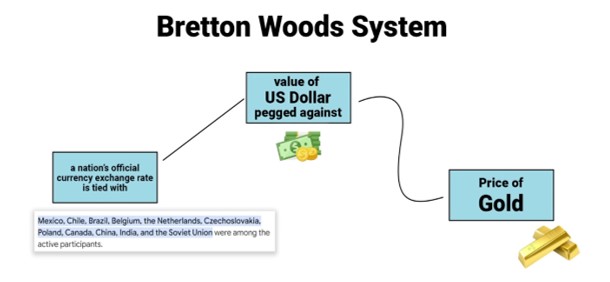
Figure 1: The Bretton Woods System[13]
The aftermath of the Yom-Kippur War resulted in the “Arab oil embargo”[14] that resulted in the disruption of oil supply to many Western nations, including the US. Moreover, the “Nixon Shock” led to the collapse of the Bretton Woods system sending shockwaves internationally.[15] Following the war, the petrodollar deal, which came into effect on June, 8, 1974, was struck between the USA and the Saudis making the dollar the sole transacting currency for settling oil payments.[16] Petrodollars are basically dollars earned from oil purchases. The establishment of the petrodollar helped the US dollar regain it’s in the global market.
The Petrodollar agreement helped Saudi gain ground in military advancements whilst trading their prime product, i.e., oil.[17] The petrodollar helped the US dollar establish itself as the world’s dominant reserved currency and helped it establish a significant political and economic power for the US. Moreover, the creation of the S.W.I.F.T. (Society for Worldwide Interbank Financial Telecommunication) system for international payment settlement helped the US watch the payments across the globe and necessitate sanctions if and when required.[18] The figure below shows how the S.W.F.I.T. system filters the payments that are executed; the sanctions are used to restrict transactions.
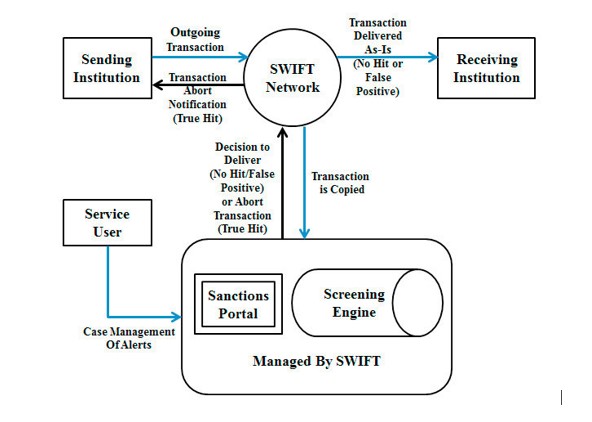
Figure 2: S.W.I.F.T. Banking System Mechanism[19]
With two of the biggest consumers and producers of crude oil, the US dollar became more stable as well as widely used currency. It helped in establishing the dollar as a norm for other oil-producing nations (OPEC and others), with nearly 80% of the global trade taking place in USD, as it guaranteed a stable income for the economies.[20] However, there has been a decline in the use of USD in the contemporary world, which will be explored in the next section.
Changing Landscape of Transactions
The USD has been the sole driver of global trade for more than half a century. However, de-dollarisation is the call of many non-US allied nations because of:
- Over-reliance on a single currency i.e. dollar, changes in the USA’s monetary policy and possible risk of sanctions:[21] The case of Iran and Russia are a testimony to the fact that any nation, which tries to go against the will of the USA will have to face the consequences of sanctions.[22] This has caused concerns among other nations which have started shifting towards bilateral trade settlement. In the contemporary scenario, sanctions are not playing out well for the US as Russia has maintained a high-income economy despite these sanctions.[23] Moreover, since the US has been in a large budget deficit for many years, there are concerns about inflation and the valuation of the dollar.
- China, a growing influential player in the global economic platform, is encouraging the use of its currency as an alternative to the USD (China is the second largest economy in the world as of today):[24] China is viewed as an economically attractive partner. The tremendous rise of China has impressed many nations and strengthened the value of the yuan as it is being used in trade with more than 100 countries.[25] Since there is no fear of sanctions, like in the case of the USD, Yuan is getting widely accepted. India too is not behind in the race.
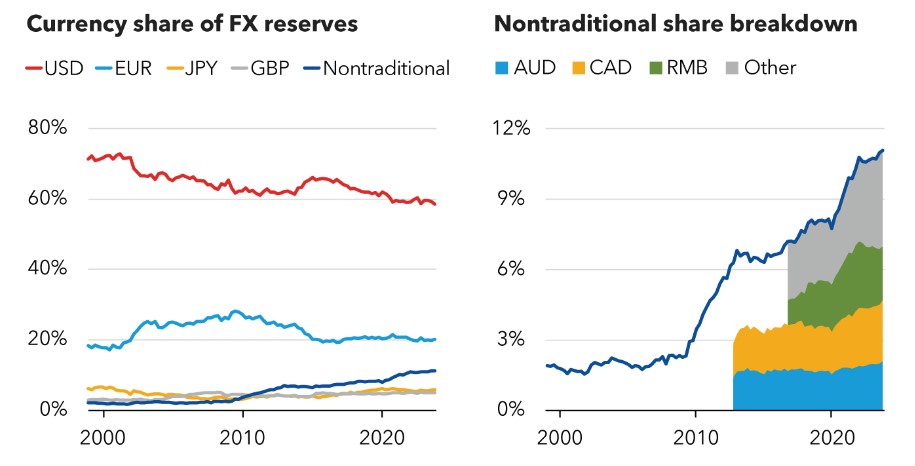
Figure 3: Fall in the use of Big 4 currencies and rise of non-traditional currencies[26]
The above figure illustrates the decline in the use of Big 4 currencies (US dollar, Euro, Pound Sterling and Japanese Yen) and at the same time rise in the use of Yuan and others.
- Dollar being used as a political weapon:[27] The use of CAATSA (Countering America’s Adversaries through Sanctions Act) by the US has always been a cause of concern for other nation-states. North Korea, Iran and Russia have been sanctioned for pretty long.[28] Witnessing such a volatile scenario, many countries are shifting towards trade in local currencies. India too started dealing in 1-1 local currencies via trade through Vostro accounts.[29]
With the long-standing Saudi-US deal of 1974 ceasing to exist, Saudi Arabia eyes to open up its market to other valued currencies. Such autonomy will help in enhancing bilateral trade and reduce dependence on a single-valued currency. India’s role in such a market is going to be crucial as we are the most populous nation.
Challenges
The dollar system to trade has been the norm for more than 50 years. But as the countries are starting to realise the power of settling trade in domestic currencies, things are starting to change. However, the changing landscape of these transactions is accompanied by challenges, some of which are listed below:
- Settling trade deficit: India’s move to establish Vostro accounts for settling oil trade payments with oil was seen as a huge hit until the latter had too many rupees which were of no use. The trade deficit between India and Russia is a whopping $57.2 Billion (the latter exporting more) which has resulted in Russian Vostro accounts having too many rupees to be used.[30] Settling this deficit and finding avenues wherein the rupee is used for settling export payments is crucial.
- Limited use of the Indian rupee: Many countries still prefer to trade in Yuan over the rupee. More than 100 countries are directly dealing in the Chinese Yuan to settle payments.[31] India too paid in Yuan to Russia for settling oil payments as the trade deficit is quite low between Russia and China. Thus, the wide acceptance of the Rupee will ensure a healthy trade.
Recommendations for India
The process of de-dollarisation has brought in the use of local currencies for international trade. By promoting trade in local currencies, India has been able to enhance its trade relationship with many nations, including Russia and Iran, who faced the wrath of US sanctions.[32]
- International UPI: India is the largest digital payments user, with more than 40% of transactions done in the year 2023.[33] The strength of UPI (Unified Payments Interface) lies in the fact that it is not being used domestically but internationally as well. With nations like France, UAE, Singapore, etc. already accepting UPI, bilateral trade can be enhanced to a greater extent.[34] The same UPI interface can be used to develop payment systems, like that of S.W.I.F.T., which are free of sanctions and take into account local currencies while trading bilaterally, thereby giving more autonomy to nations.
- BRICS Currency: BRICS is seen as a non-western alliance of major developing economies. BRICS has expanded its reach in 2024 with 5 new members joining the group (Egypt, Ethiopia, Iran, Saudi Arabia and UAE). Out of the 5 new joiners, 3 are major oil-producing and exporting nations. With the nations of BRICS+ looking for strategic autonomy, developing a BRICS currency is a viable solution for trade multilaterally with these nations. Although there is no sign of the currency yet, the BRICS blockchain-based payment system is under work.[35] India can play a key role as a partner of BRICS in developing digital payment infrastructure and regulated banking systems, promoting payments across other multilateral groups like ASEAN and providing financial contributions to the economies of BRICS.
- Gold Reserves: India should start increasing its gold reserves as a means to provide a stable alternative to the dollar. China has been stacking up its gold reserve and selling US bonds due to high geopolitical tensions and economic turmoil.[36] No one knows the future but, surely, gold is not losing its value.
- Bilateral Trade: Finding a way around the Dollar exchange rate can be quite challenging as the currencies are currently pegged against the USD.[37] The bilateral exchange rates are typically decided against the USD. However, the Trade Weighted Index (TWI) can help in finding a way around the USD system, as it captures the price of a domestic currency in terms of a weighted average of a basket of currencies.[38] Using such a method to develop bilateral payment systems in local currencies can provide a win-win situation for all. It becomes crucial for the India to look deep into such prospects to settle bilateral payments.
Conclusion
The contemporary geopolitical scenario calls for trade which is free of any sanctions and restrictions. Having a de-dollarized economy will help in diversifying assets and establishing better bilateral relations through trade. Moreover, it will help oil-producing nations to explore other payment systems and increase profit. It is high time for India to jump in and utilise its biggest strength in the payment market, i.e., UPI, to settle trade and build better ties across the globe.
DISCLAIMER
The paper is author’s individual scholastic articulation and does not necessarily reflect the views of CENJOWS. The author certifies that the article is original in content, unpublished and it has not been submitted for publication/ web upload elsewhere and that the facts and figures quoted are duly referenced, as needed and are believed to be correct.
Endnotes
- Brad McDonald, “International Trade: Commerce among Nations,” International Monetary Fund, 2022, https://www.imf.org/en/Publications/fandd/issues/Series/Back-to-Basics/Trade.
- Andrew Beattie, “The History of Money: From Barter to Banknotes,” Investopedia, September 17, 2022, https://www.investopedia.com/articles/07/roots_of_money.asp.
- Ibid.
- Sandra Ghizoni, “Creation of the Bretton Woods System,” Federal Reserve History, November 22, 2013, https://www.federalreservehistory.org/essays/bretton-woods-created.
- Mrugank Bhusari, Maia Nikoladze, and Ryan Murphy, “Dollar Dominance Monitor,” ed. Josh Lipsky et al., Atlantic Council, June 25, 2024, https://www.atlanticcouncil.org/programs/geoeconomics-center/dollar-dominance-monitor/#:~:text=The%20US%20dollar%20has%20served.
- FP Explainers, “What Was the US-Saudi Petrodollar Deal That Lapsed after 50 Years?”, Firstpost, June 13, 2024, https://www.firstpost.com/explainers/what-was-the-us-saudi-petrodollar-deal-that-lapsed-after-80-years-13782292.html.
- J.P. Morgan, “De-Dollarization: The End of Dollar Dominance? | J.P. Morgan,” www.jpmorgan.com, August 31, 2023, https://www.jpmorgan.com/insights/global-research/currencies/de-dollarization.
- Ibid.
- Hung Tran, “Understanding the Growing Use of Local Currencies in Cross-Border Payments,” Atlantic Council, August 25, 2023, https://www.atlanticcouncil.org/blogs/econographics/understanding-the-growing-use-of-local-currencies-in-cross-border-payments/.
- Explainers, “What Was the US-Saudi Petrodollar Deal That Lapsed after 50 Years?”, Firstpost, June 13, 2024, https://www.firstpost.com/explainers/what-was-the-us-saudi-petrodollar-deal-that-lapsed-after-80-years-13782292.html.
- Sandra Ghizoni, “Creation of the Bretton Woods System,” Federal Reserve History, November 22, 2013, https://www.federalreservehistory.org/essays/bretton-woods-created.
- Thomas Costigan, Drew Cottle, and Angela Keys, “The US Dollar as the Global Reserve Currency: Implications for US Hegemony,” World Review of Political Economy 8, no. 1 (2017): 107.
https://www.jstor.org/stable/pdf/10.13169/worlrevipoliecon.8.1.0104.pdf?refreqid=fastly-default%3A0cd8e58ead1b905bba8c93b93b267245&ab_segments=0%2Fbasic_search_gsv2%2Fcontrol&origin=&initiator=search-results&acceptTC=1. - Amit Sengupta, “Saudi Ends Petrodollar Deal with US – in Depth Analysis | Saudi Arabia, US Oil Geopolitics Economy,” YouTube, July 1, 2024, https://www.youtube.com/watch?v=gk9v3KR8zXo?t=111.
- Adam Zeidan, “Arab Oil Embargo | International Relations [1973],” in Encyclopædia Britannica, February 15, 2018, https://www.britannica.com/event/Arab-oil-embargo.
- Will Kenton, “Nixon Shock,” Investopedia, July 1, 2021, https://www.investopedia.com/terms/n/nixon-shock.asp.
- FP Explainers, “What Was the US-Saudi Petrodollar Deal That Lapsed after 50 Years?,” Firstpost, June 13, 2024, https://www.firstpost.com/explainers/what-was-the-us-saudi-petrodollar-deal-that-lapsed-after-80-years-13782292.html.
- Oval Office, “MEMORANDUM of CONVERSATION,” Ford Library Museum, June 6, 1974, https://www.fordlibrarymuseum.gov/library/document/0314/1552718.pdf.
- Nathan Reiff, “SWIFT and Sanctions: How Banking System Impacts International Relations,” Investopedia, July 19, 2022, https://www.investopedia.com/swift-and-sanctions-how-banking-system-impacts-international-relations-5220404.
- Tianyi Qiu, Ruidong Zhang, and Yuan Gao, “Ripple vs. SWIFT: Transforming Cross Border Remittance Using Blockchain Technology,” Procedia Computer Science 147 (January 2019): 428–34, https://www.researchgate.net/publication/331006094_Ripple_vs_SWIFT_Transforming_Cross_Border_Remittance_Using_Blockchain_Technology.
- Amit Sengupta, “Saudi Ends Petrodollar Deal with US – in Depth Analysis | Saudi Arabia, US Oil Geopolitics Economy,” YouTube, July 1, 2024, https://www.youtube.com/watch?v=gk9v3KR8zXo?t=426.
- Newsroom, “Four Reasons for De-Dollarization,” Modern Diplomacy, August 23, 2023, https://moderndiplomacy.eu/2023/08/23/four-reasons-for-de-dollarization/.
- The White House, “Statement from President Joe Biden on Iran Sanctions,” The White House, April 18, 2024, https://www.whitehouse.gov/briefing-room/statements-releases/2024/04/18/statement-from-president-joe-biden-on-iran-sanctions/.; Alan Rappeport, “U.S. Imposes Major New Sanctions on Russia, Targeting Finance and Defense,” The New York Times, February 23, 2024, sec. Business, https://www.nytimes.com/2024/02/23/business/us-sanctions-russia.html.
- ET, “Despite War and Sanctions, Russia Becomes a High-Income Economy,” The Economic Times, July 6, 2024, https://economictimes.indiatimes.com/news/international/world-news/despite-war-and-sanctions-russia-becomes-a-high-income-economy/articleshow/111463177.cms?from=mdr.
- Newsroom, “Four Reasons for De-Dollarization,” Modern Diplomacy, August 23, 2023, https://moderndiplomacy.eu/2023/08/23/four-reasons-for-de-dollarization/.
- “More than 100 Countries Are Now Using the RMB for Payments with China and Hong Kong,” Swift, October 27, 2016, https://www.swift.com/news-events/press-releases/more-100-countries-are-now-using-rmb-payments-china-and-hong-kong.
- Serkan Arslanalp, Barry Eichengreen, and Chima Simpson-Bell, “Dollar Dominance in the International Reserve System: An Update,” IMF, June 11, 2024, https://www.imf.org/en/Blogs/Articles/2024/06/11/dollar-dominance-in-the-international-reserve-system-an-update#:~:text=Dollar%20dominance%E2%80%94the%20outsized%20role.
- Rory Atkins, “The Dollar Is Our Currency, but It’s Your Problem,” EIU Corporate Network, September 6, 2023, https://corporatenetwork.com/the-dollar-is-our-currency-but-its-your-problem/.
- “CAATSA: What It Is, Why It Is in News & How It Can Hurt India,” The Economic Times, March 8, 2022, https://economictimes.indiatimes.com/news/defence/caatsa-what-it-is-why-it-is-in-news-how-it-can-hurt-india/articleshow/89986708.cms?from=mdr.
- Saptaparno Ghosh, “Explained | Vostro Accounts and How They Facilitate Trade,” The Hindu, February 21, 2023, sec. Economy, https://www.thehindu.com/business/Economy/explained-vostro-accounts-and-how-they-facilitate-trade/article66537848.ece.
- PTI, “India in Trade Deficit with Nine of Top 10 Trading Partners in 2023-24,” The Hindu, May 26, 2024, sec. Economy, https://www.thehindu.com/business/Economy/india-in-trade-deficit-with-nine-of-top-10-trading-partners-in-2023-24/article68217897.ece.
- Vijay Victor, “Rupee Must Catch up with Yuan before Replacing $,” Deccan Herald, August 14, 2023, https://www.deccanherald.com/opinion/rupee-must-catch-up-with-yuan-before-replacing-2646279.
- Sundaram Balasubramanian, “De-Dollarization: Unveiling India’s Growing Influence in Global Trade – IMPRI Impact and Policy Research Institute,” www.impriindia.com, July 27, 2023, https://www.impriindia.com/insights/policy-update/de-dollarization-india/#:~:text=With%20de%2Ddollarization%2C%20India%20has.
- “India’s UPI: A Global Front-Runner in Digital Payment Systems,” pib.gov.in, October 30, 2023, https://pib.gov.in/PressReleaseIframePage.aspx?PRID=1973082&ref=indiatech.com.
- Vivek Umashankar, “UPI Goes Global: List of Countries Accepting India’s Digital Payments System,” The Indian Express, February 16, 2024, https://indianexpress.com/article/technology/tech-news-technology/upi-goes-global-supported-countries-9164907/.
- Michael Corbin, “BRICS and De-Dollarization, How Far Can It Go? | Responsible Statecraft,” responsiblestatecraft.org, June 3, 2024, https://responsiblestatecraft.org/dedollarization-china-russia/#:~:text=BRICS%20members%20have%20not%20developed.
- “China Is Buying Gold like There’s No Tomorrow, Jacking up Prices,” The Times of India, May 6, 2024, https://timesofindia.indiatimes.com/world/china/china-is-buying-gold-like-theres-no-tomorrow-jacking-up-prices/articleshow/109866107.cms#:~:text=Last%20year%2C%20the%20bank%20bought.
- Akhilesh Ganti, “Currency Pegging: Overview and Pros and Cons,” Investopedia, April 30, 2024, https://www.investopedia.com/terms/p/pegging.asp#:~:text=Pegging%20often%20involves%20preset%20ratios.
- Reserve Bank of Australia, “Exchange Rates and Their Measurement | Explainer | Education,” Reserve Bank of Australia, 2020, https://www.rba.gov.au/education/resources/explainers/exchange-rates-and-their-measurement.html.


